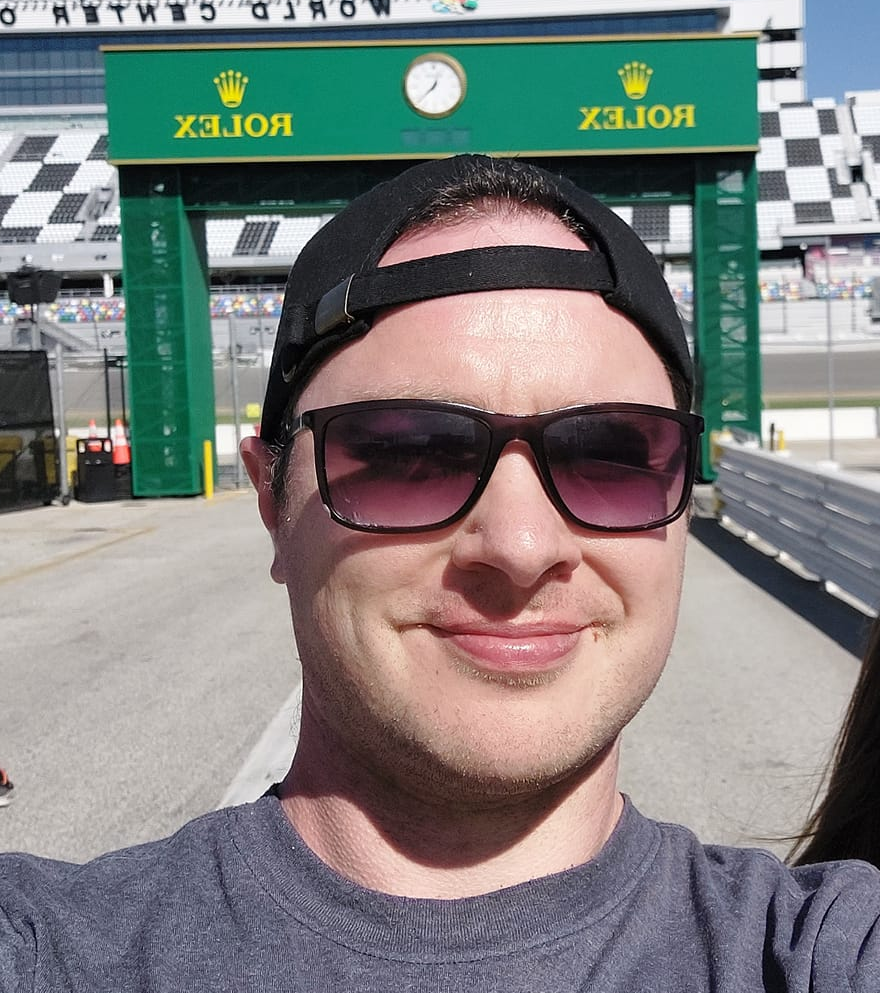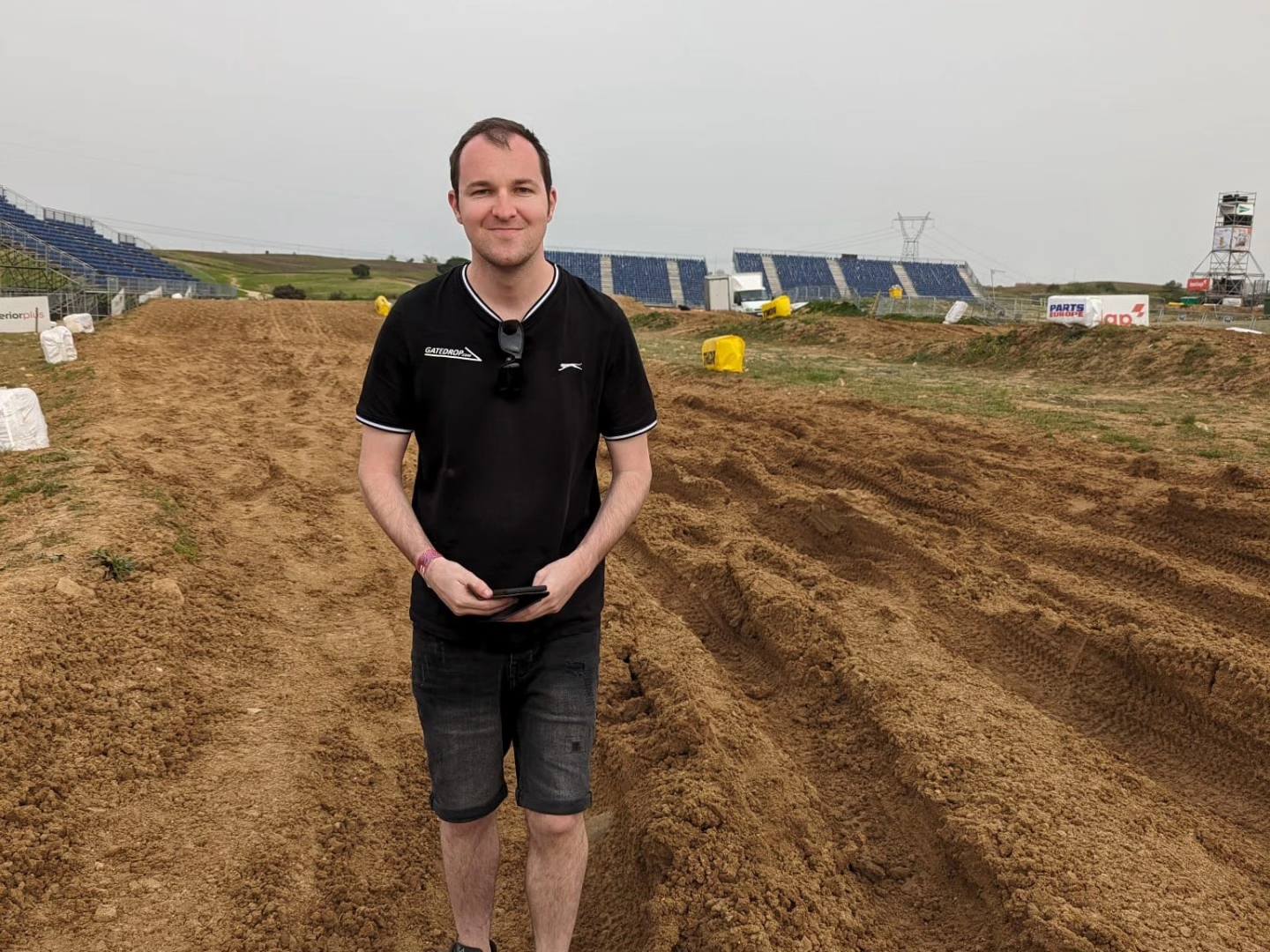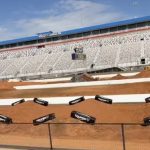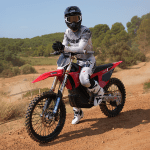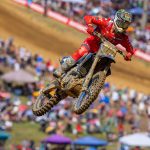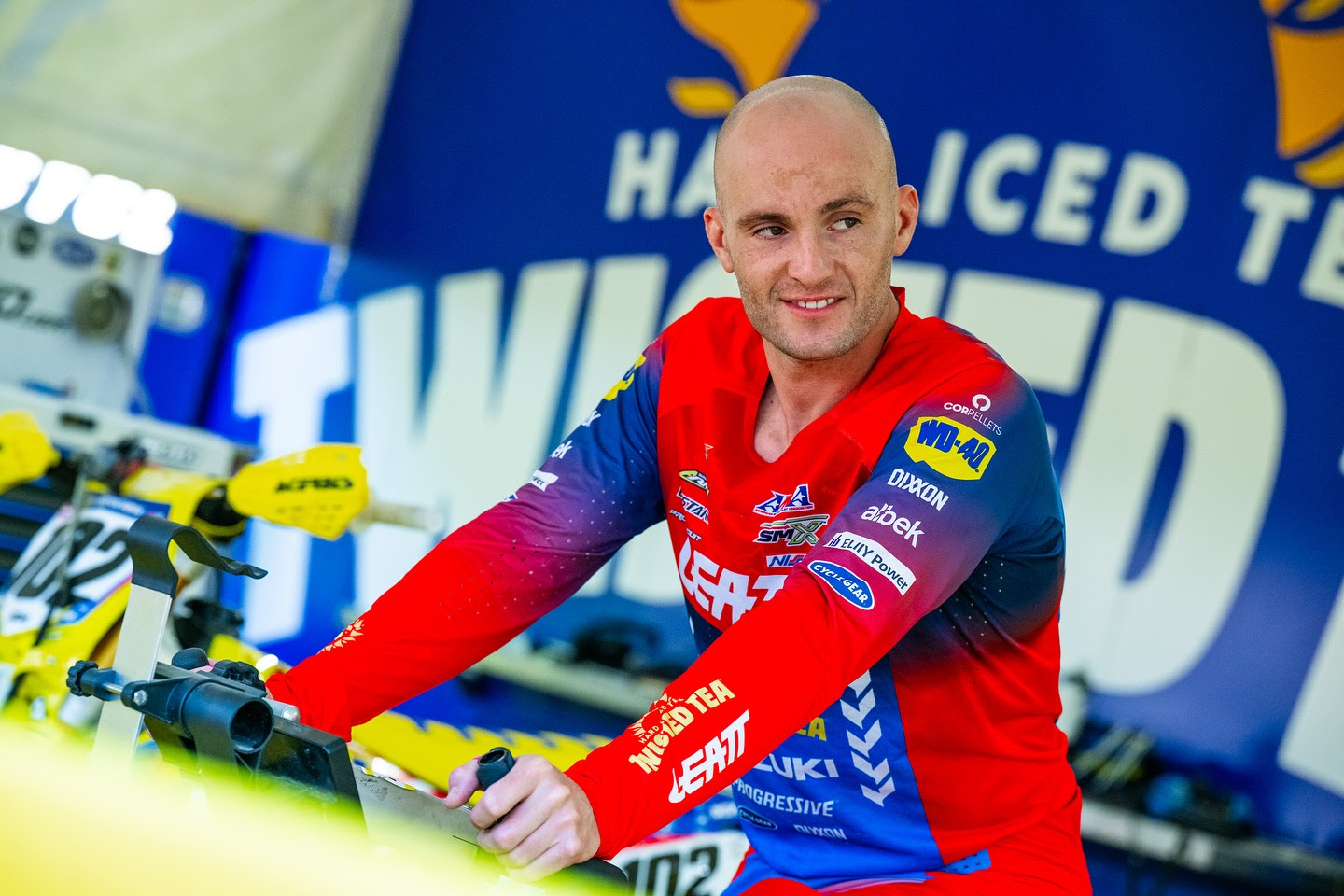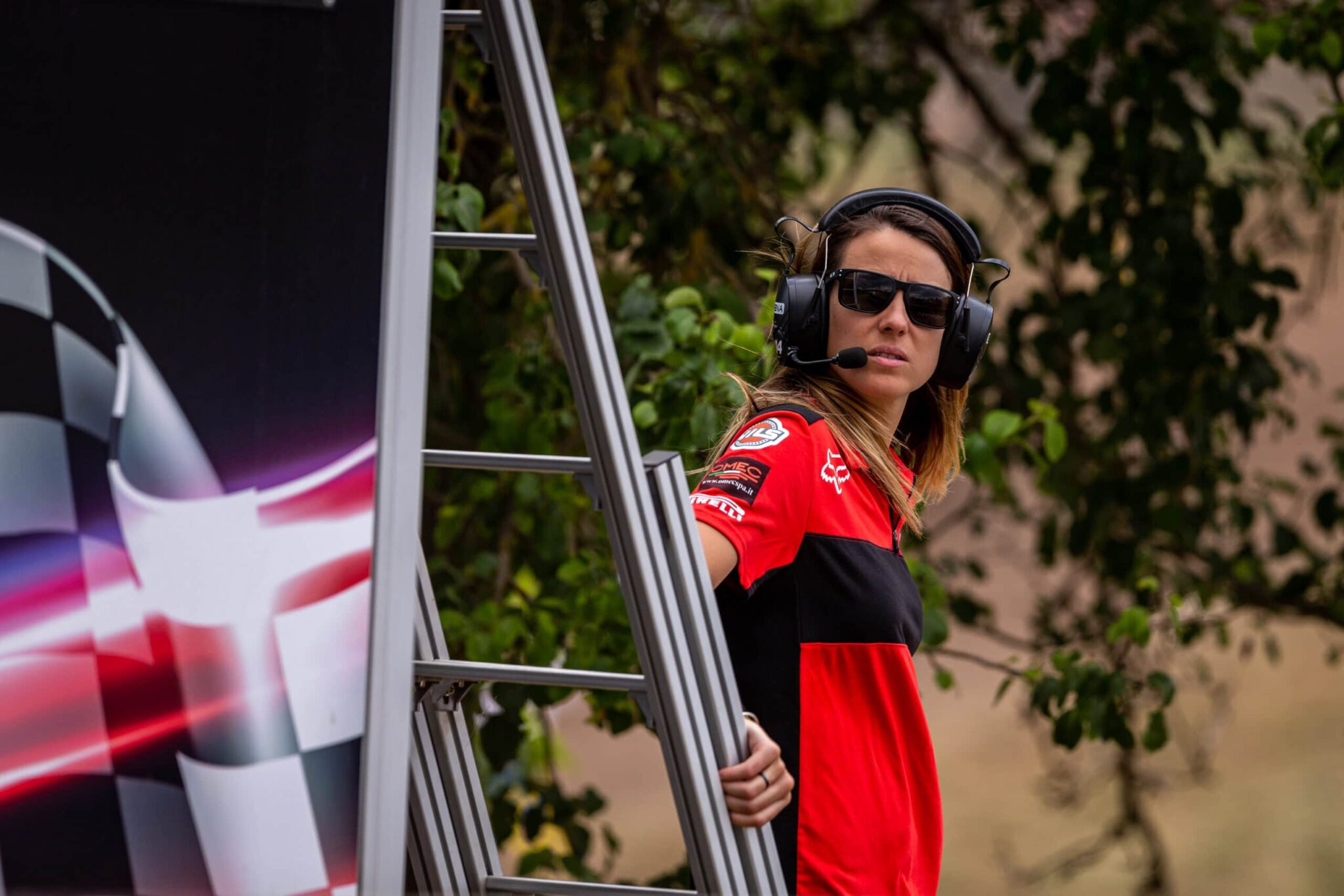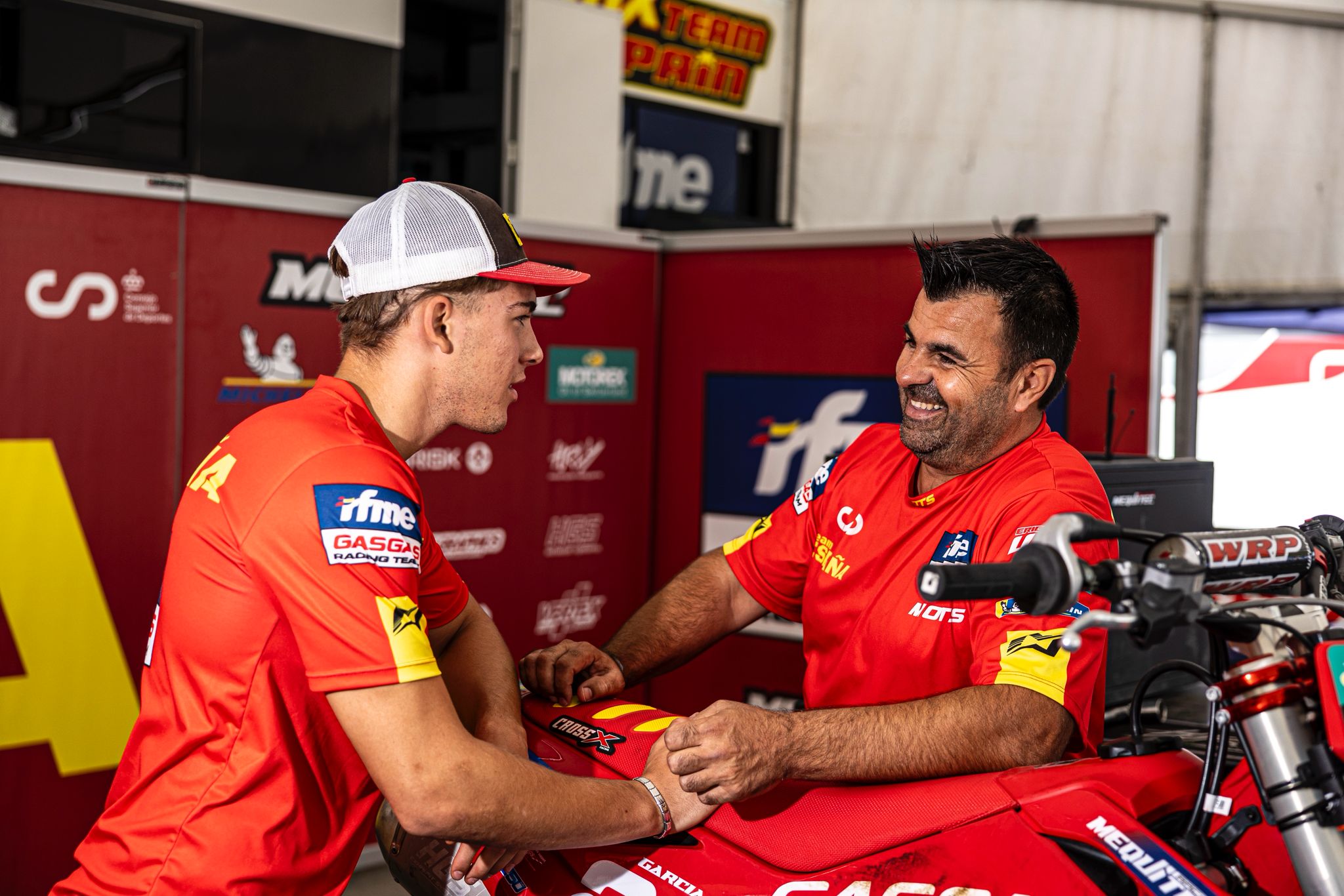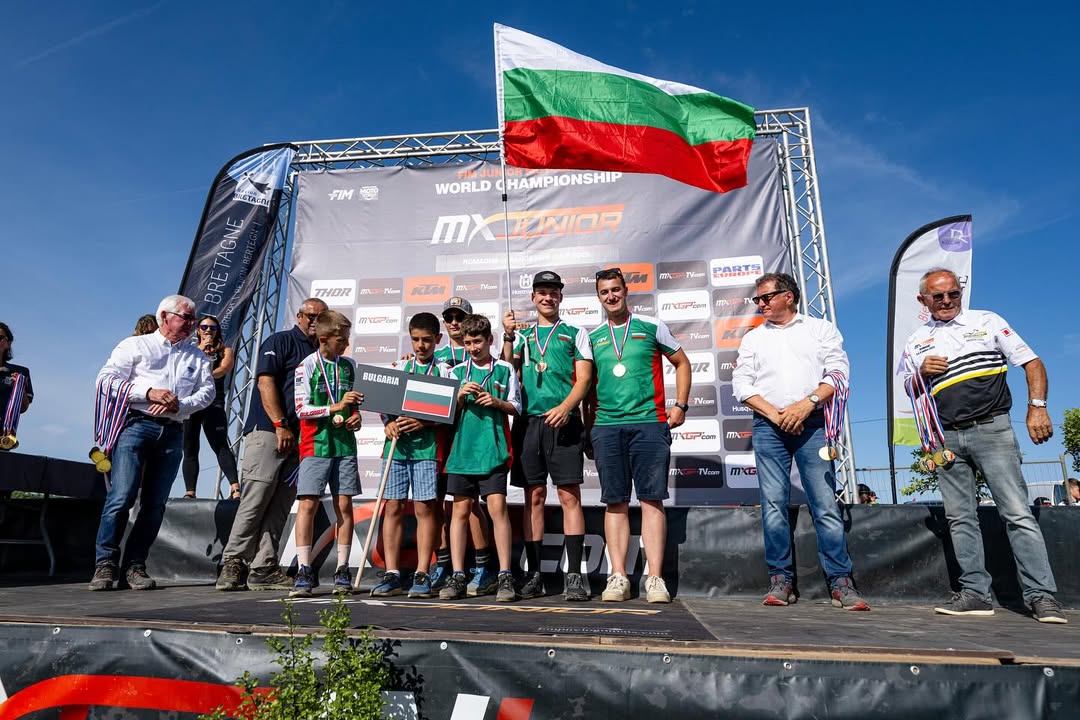In February, Benoit Paturel packed his bags and set off for the United States with one goal in mind: to land a ride for the AMA Motocross Championship. It was a bold gamble, but one that paid off for the French rider. Overlooked by MXGP teams, Benoit secured a valuable opportunity with the HEP Suzuki team to contest the second half of the AMA season. With three rounds remaining, he stands as the top French representative in the 450 class. During a break in the U.S. calendar, Kevin Frelaud caught up with him for an update.
Benoit, the last time we spoke, you were preparing for the outdoors without really knowing what to expect. You were hoping to find a ride. A gamble that paid off, as you joined the HEP Suzuki team alongside colt nichols. How did this deal come about, to begin with?
Paturel: I first got in touch with them in mid-March, but it took a while to materialize—even just to arrange a test—because HEP was in the middle of the Supercross season, and they were in the title fight with Roczen, which was their priority. I was planning to return to France to ride at Thomer and Sainte-Austreberthe to prepare and do two French races before the Outdoors. They called me two days before I was due to fly back to test the Suzuki. I tried the bike, and it went well. We reached a verbal agreement, and by the time the contract was finalized, it was early May when I went back to the U.S. I rode the bike three or four times, then started the season like that. I hadn’t put many hours on the bike, but everything came together nicely.
How did that first contact with hep go?
Paturel: I think because I was always riding the same tracks and seeing a lot of industry people, word started to spread about me, and people must have said I was riding well. That definitely helped. They probably knew I was looking for something. Since Chisholm was stepping away and Roczen wasn’t racing the Outdoors, they needed a second rider. They called me, and everything came together quickly. Signing with a team like HEP was exactly what I had been hoping for this winter.
Let’s talk about this Suzuki, because we know it’s not the most modern bike on the grid, with no major updates in years. But they do have a rider like Roczen, so the bike must still be developed. How does this rm-z 450 stack up compared to the Yamaha you know so well?
Paturel: I think the stock Yamaha is the best bike on the market—no debate there, everyone knows it. As for the Suzuki, I was really surprised by the chassis, the handling, and the suspension. On hardpack, I’m very happy. We still need to make progress on softer tracks, though. The team is working really hard, and if we keep at it, things will evolve in the right direction so we can gain a bit more on softer terrain in terms of engine performance. But overall, I’m really happy with the bike—genuinely surprised, actually. It was a question mark before I tried it because, as you said, it’s an older bike, but I was still very impressed. For the first test, I was on one of the team’s tracks I didn’t know at all. It was a sand track, and my time in Belgium helped me a lot. I had fun and felt comfortable straight away. It was a race-prepped bike with a suspension setting, and we made changes and adjustments throughout the day. They worked hard to make me as comfortable as possible. I wasn’t just there to “see” the bike—I think they were genuinely looking to sign me, so they wanted me at ease from the start. I got settled in quickly.
Since the outdoors started, what do your weeks between races look like? Is it a lot of testing? Are you still chasing setups or can you put in solid training blocks and motos?
Paturel: The bulk of the testing was done in the days leading up to the Outdoors. For now, I’ve found a base setup that works for me and that I like. I’m waiting for some engine updates, like I said, for the softer tracks. Other than that, I like the bike. It’s mostly small details now. Every time I train, there’s always a suspension guy with me. On that side, I have full factory-level support, which is great. If I need to change something, I can do it whenever I want.
When you talk about engine improvements for soft terrain, what exactly are you looking for?
Paturel: More power, plain and simple. On hardpack, the bike is very good—it has great traction. But when it’s soft, compared to the Yamaha, which has strong bottom-end, we need to improve. It’s going in the right direction, though. And most importantly, the team is doing everything they can. Even if things don’t always work out how we want, they’re putting in maximum effort, which is huge.
HEP is a strong team. You must be getting good support compared to what you’ve had in MXGP in recent years, where it sometimes looked like you were getting by on scraps.
Paturel: Exactly. Honestly, I have a lot of support now. I think I’m back to the level of backing I had in MX2 with the factory Yamaha team. Even though Suzuki officially stopped their motocross program, to me, HEP feels like a factory team. At least, it feels that way. All I have to do is focus on riding, and that’s a pleasure. Of course, I don’t know the bike like the back of my hand—it’s only been three months since I started riding it. On top of that, I have to learn each track as we go. There are surprises. You need to adapt the bike, the settings, and yourself. But we’re making good progress, so hopefully it continues.
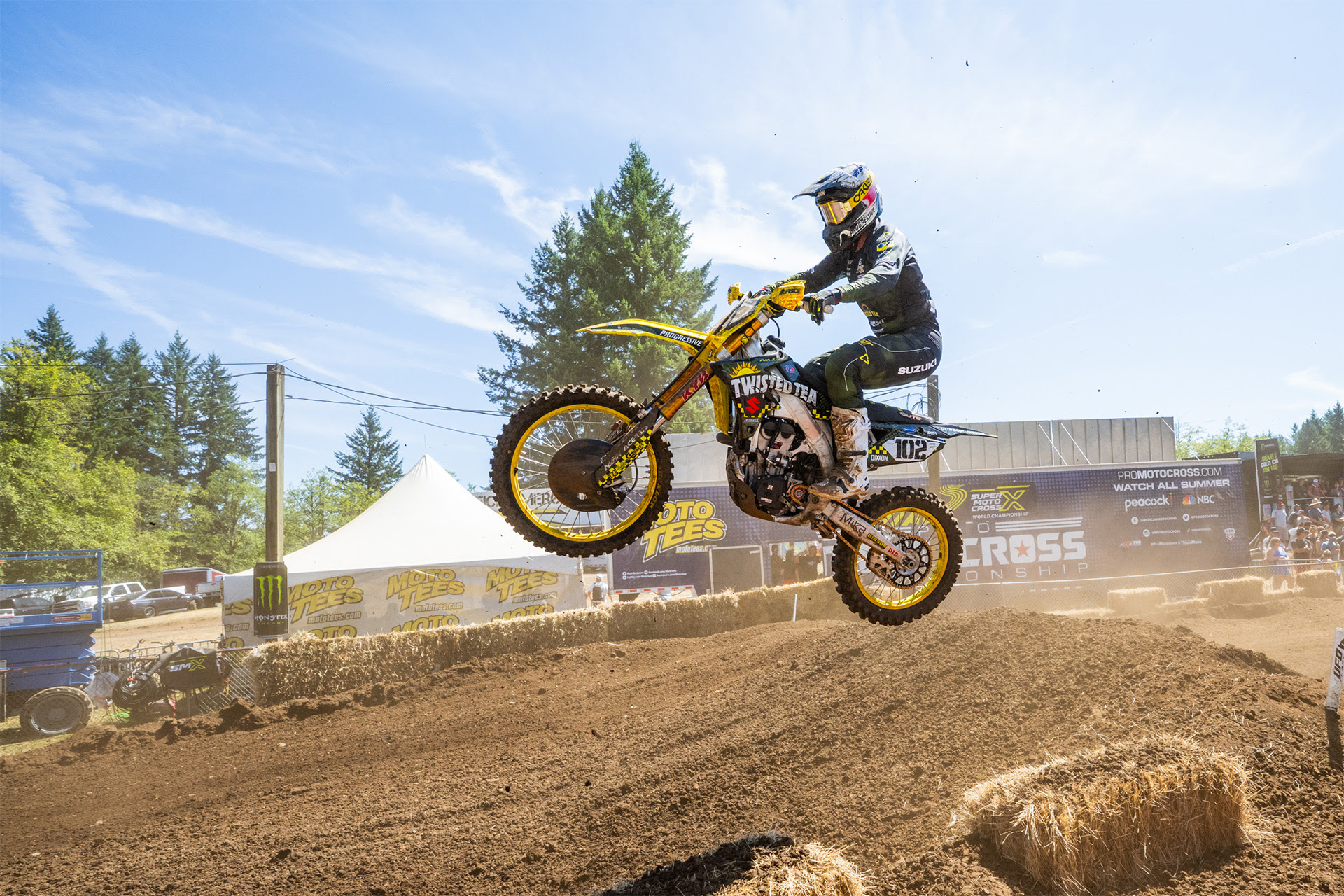
When you first arrived, you had to hire your own mechanic, and I believe Marvin [Musquin] Helped you out. How’s that situation now?
Paturel: No, the team handles all of that now, which is great. We moved to Florida for the East Coast rounds because the travel was brutal, and the time difference made it even harder. Now, I train at Moto Sandbox with Roczen, Shimoda, Ferrandis, Kitchen, McElrath, Savatgy… there’s a ton of talent there. The tracks are unreal. I don’t think I’ve ever trained on facilities this good in my life. The place is massive, incredible. Every time you get on the bike, the quality of riding is high. The heat and humidity are tough, but it prepares you for race conditions. The team is doing everything to make it go smoothly—I’m in a good place. Like I told you before, there was no Plan B for me. I might have done the first two rounds privately, but there’s no way I could have done a full motocross season alone. It wasn’t possible.
Did you have any other options outside of HEP?
Paturel: Concrete ones, beyond just conversations? No. HEP was the only real one.
The first race was at Fox Raceway. You’d done most of your training there before the outdoors, so you knew what to expect. After that, you had to discover the other tracks. With all the lines in the corners, the size of the jumps, the speed you guys carry… it feels a world away from the tight corners of arco. I imagine it’s nothing like what you’ve known these last 15 years?
Paturel: Yeah, it’s incomparable—and honestly, sometimes shocking. Like you said: the jumps, the speed, everything’s bigger, faster, wider… I wouldn’t say it’s another sport, but it’s really nothing like what we’re used to. The toughest part is adapting quickly. You only get two 15-minute practice sessions, which is basically two six-lap runs. If you don’t know the track and aren’t warmed up, you still need to push hard by your second lap. That’s the hardest thing to manage. In GPs, we know the tracks for years. In MXGP, you ride three times on Saturday and get warm-up Sunday—it’s not comparable. That quick adaptation is the hardest challenge. But it’s the same for all European riders. The first year is always the hardest. Still, the tracks are amazing, nothing to complain about—it’s all fun to ride.
Which track have you enjoyed the most so far, and which one the least?
Paturel: Fox Raceway was where it went best, because it’s the only track I’d ridden many times before, and as you said, that really helped. Even though the race layout changes, you have your landmarks. That’s where I’ve had my best result so far, actually. I also really liked High Point—it’s a beautiful natural track with climbs and descents, a fantastic layout. The worst, I’d say, was Thunder Valley. We struggled with the altitude. The track is 2,000 meters above sea level. You don’t realize it, but that’s really high. I don’t think the team had much experience there either, since I don’t believe they’d raced it in recent years. The bike just didn’t work at all, and it was my worst round.
I’m curious… is Larocco’s Leap really that big?
Paturel: Honestly, it’s massive. You need guts. We were talking about it among ourselves… It’s huge. The first time I jumped it, I gave it everything I had. I thought I’d clear it by a mile, but I landed on the top of the landing—almost came up short. It’s far, it’s big, it’s uphill. It’s a really technical, serious jump.
On TV, it doesn’t look that crazy. For example, there’s that giant tabletop at high point that always looked bigger to me…
Paturel: That quad is definitely big and long, but it’s easy to do. You just stay on the gas up the hill, you float, you’re in the air for a while, but it’s fine. The jump’s huge, but “easy,” you could say. Larocco’s Leap, though, is very technical. There’s no real run-up, the approach is rough, and you can’t come up short or you’re done. It’s one of the hardest jumps I’ve ever hit in my career. I’d compare it to the big quad at Matterley, which is similar in difficulty.
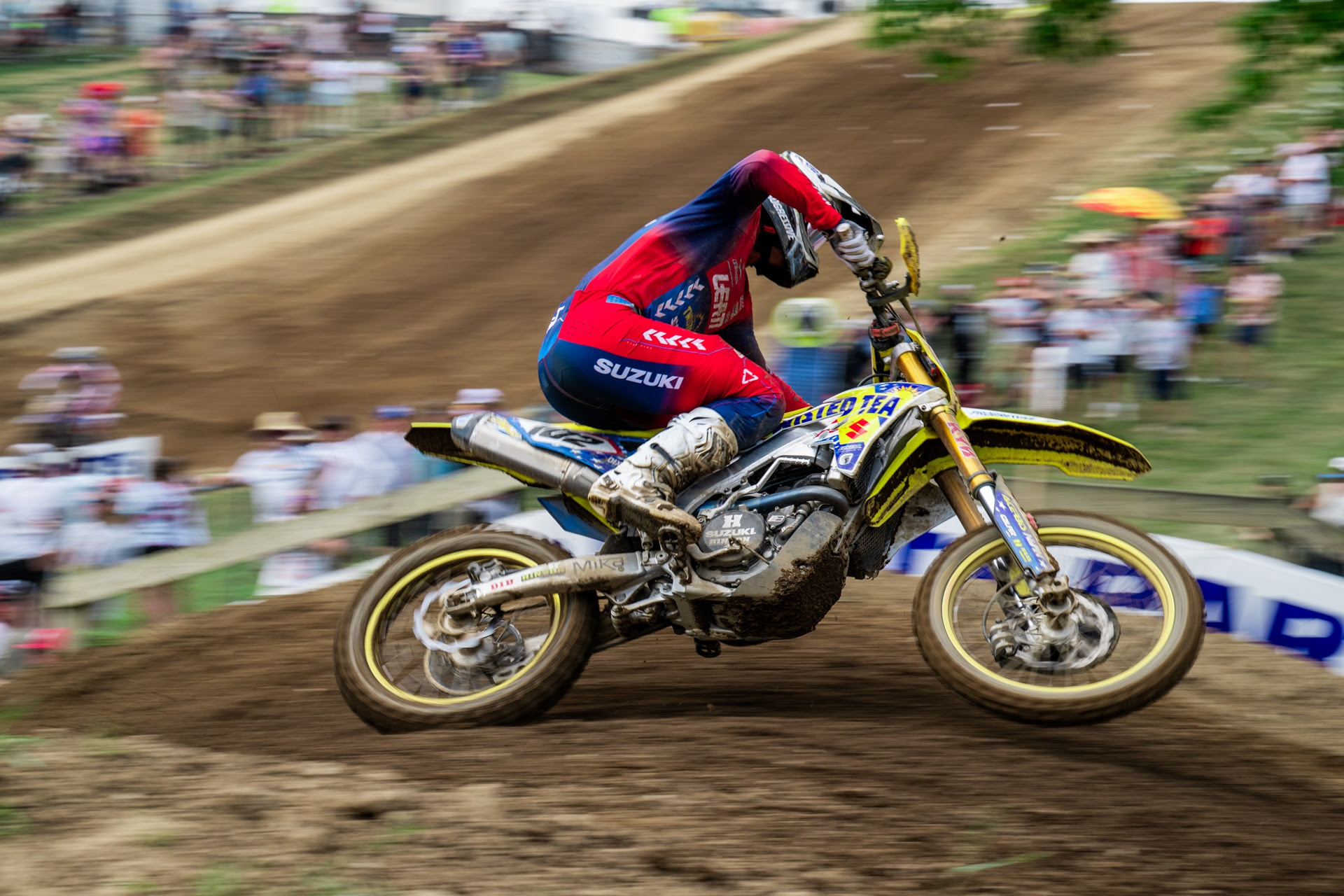
What’s been the hardest thing to adjust to since arriving in the U.S.?
Paturel: I like the American lifestyle. I will say it’s been easier to find good food in California than Florida so far, but we haven’t been here long, so we still need to find the right spots to eat well.
But the hardest part is the travel. The time you spend on planes, the time all the connections take… You have to take buses, shuttles. In Europe, it’s two or three hours on a plane most of the time and you’re done. Here, it’s easily four or five hours. Last week, we had six. Plus, you’re hit with three hours of jet lag, which kills a day every time. Weeks feel short—basically three-day weeks when the races come back-to-back. Honestly, the pace, the travel—everything—it’s nothing like GPs. It’s physically demanding, even with fewer rounds than the World Championship. I can’t imagine what it’s like for guys doing 17 Supercross, 11 Outdoors, and the SMX playoffs. Massive respect to them.
I’m surprised you say the travel is the hardest part, since you flew every round in GP’s too.
Paturel: Yeah, but it’s still “easier” there. The U.S. is just so huge. The airports are enormous—basically cities themselves—so every trip feels like an adventure. For example, heading to Southwick, we left California (west) to get to the race (east). We left Thursday, and our connection was first delayed, then canceled. I didn’t sleep Thursday to Friday night. There were no flights Friday to the race, so we drove 12 hours to get there. I slept five hours in two days, didn’t know the track, it was deep sand, and I had to go full gas by my second lap… Quite the experience. That’s just part of racing in the U.S.
You don’t do the press days?
Paturel: I’d like to, but I can’t do them all. You’re only allowed a certain number per season. But when I can, it helps a lot for Saturday, since it adds 20–30 minutes of track time. It’s like getting a solid practice session. If you need to make bike changes, you can do it Friday. It’s a shame I can’t do them every time because it really makes things easier.
Southwick is often considered the most “European” style track. Does it feel that way?
Paturel: I’d say the soil is what we’re most familiar with. The track itself isn’t like Lommel, but yes, it’s still sand, so we’re used to it. It’s kind of a mix—like Kegums texture with some hard base underneath—but it’s nothing like Lommel because it’s way less rough and much faster. Lommel, for me, is still the toughest track in the world. Southwick could have gone well, but with the travel mess I told you about, it was complicated. In the first timed session, I was 29th. In the second, I was 10th or 11th, but we were slower than in the first because the track was rougher. I lined up far outside on the gate, still got good starts, but had clutch problems in both motos and stalled. Went 14–14.
Did this season in the U.S. Turn out how you expected, after thinking about it for so long, or is it different?
Paturel: It’s different. I think that’s because of TV. We all know the tracks from watching the races, but when you get there, it’s nothing like what you saw on screen. And in terms of speed, I find the pace up front extremely high. People always want to compare it with MXGP, but honestly, it’s impressive. I also think it’s been a while since the 450 Outdoors had such a deep, competitive field. It’s awesome, makes for great racing. The last four rounds, I’ve had my share of problems—bike issues, tangles with other riders—but that’s racing.
What impresses you the most, specifically?
Paturel: Mainly just the speed. Last weekend, I qualified 13th. I think I was within a second of the top 10, and Jett was still six seconds a lap faster than me. And I was riding really well. You end up wondering where he finds those six seconds. The tracks are bigger, so the gaps are naturally bigger, but still—raw speed-wise, it’s fast. People talk about Jorge Prado, but Jorge rides very well. Even if it’s tough for him, he’s battling. The thing is, the pace at the front is just crazy.
After eight rounds, you’re just outside the top 15 in the standings. You’ve had some strong motos and some tough ones. How do you look back on this first chunk of the season?
Paturel: I’m frustrated with the last four, where I’ve had bike problems. At Washougal, I got cleaned out. The last two weekends, I didn’t score points. I was on the verge of the top 10 in the standings, and I dropped. It sucks, honestly. But there are three rounds left. We’ll do everything to be solid, crack the top 10, and finish where I belong. Overall, it’s been pretty positive, even if we always want more. The last few weekends cost me a lot of points. It’s a shame because some of it could have been avoided, but that’s racing. Nothing’s been easy, but we’re not giving up. Three rounds left—we’re doubling down.
What do you need to be a regular top 10 guy? Because your results this year look similar to your GP results.
Paturel: Yeah, more or less. To consistently be in the top 10, it’s mainly about starts and holding the pace. Things just didn’t come together the last four rounds, but speed- and fitness-wise, I think top 10 is my spot. It’s up to me to get it in the last three.
You’re in the top 30 of the combined standings for SMX. Not far from the top 20. If you crack the top 20, you qualify directly for the playoffs; otherwise, you go through the LCQ. Is SMX a goal for you?
Paturel: SMX was always in the plan when I signed with the team. It was for the Outdoors and SMX. Either way, I think it’s on the schedule. I’ve never raced Supercross, except a one-off years ago in Lyon. We’ll see. I’ll train at Moto Sandbox in August to prepare as best I can for SMX. Honestly, I’m not overthinking it. My personal goal was the Outdoors. I want to finish that strong, then move to SMX—it’s just a bonus for me.
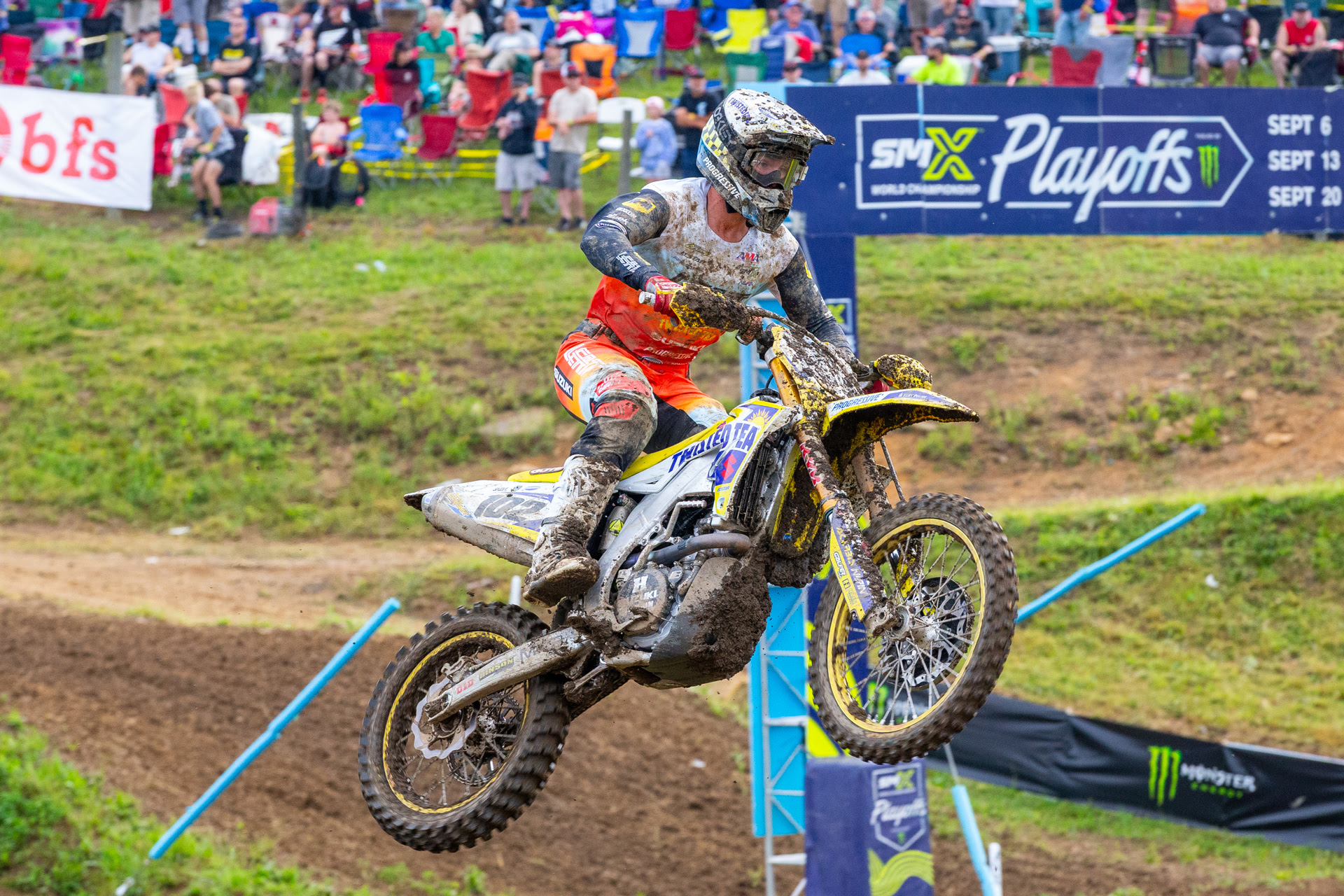
Do you still follow the GP’s? And has your view of the world championship changed now that you’ve experienced the U.S.?
Paturel: Yeah, I still follow it. Mainly Thibault [Benistant] because we’re close. I watch when I have time. It’s still a great championship. The only thing, like many riders have said, is that I’m not a fan of the tracks lately. But yeah, I’ve sort of turned the page.
Are you already thinking about 2026? Any ideas or plans taking shape? Have talks started?
Paturel: The goal is to stay with HEP. They’re happy with me, so I don’t see why not. Talks have started a bit—we’ll know more in a few weeks. Hopefully by August or early September, I’ll know for sure. The plan is to stay with them next year. I don’t think Supercross will be in my program, but Outdoors and SMX would be great.
If you stay in the U.S., would you consider doing 250 supercross and then moving up to 450, since there’s no age eligibility rule there? Guys like Max Anstie have revived their careers doing that.
Paturel: If I ever race a full Supercross season, it would definitely be in 250. The 450 class is too stacked—I couldn’t just jump into that. But for now, my plan is AMA Motocross and SMX because there are no whoops. We’ve already talked about all this a bit. It depends on HEP’s plans too; I think they’re waiting to lock down Roczen before looking ahead to 2026. My goal is to stick with them and have an even better season next year.
To make this move to the U.S., you must have invested in yourself. Did you put a lot on the line? And now that we’re past the midpoint of the season, are you able to cover your costs? Are you making a decent living racing here or is it still tough?
Paturel: No, everything’s fine on that front. I’m very happy with the contract HEP offered me. Plus, there are bonuses from the AMA and Suzuki, so I can’t complain.
Would you ever consider a return to the GP’s?
Paturel: Not at all.
Even if you got a good offer?
Paturel: A good offer would mean a factory team, and I don’t think I’m on their radar anymore. Simple as that—you have to be realistic. Last year was tough when I was basically told it was time to stop, even though I still wanted to race. But now, I’ve turned the page. I’m not saying I’ll never do a GP again, but unless a factory team comes calling—which it won’t—I won’t be back. Even for top riders, it’s hard to get a ride… for me, MXGP is over. I’m focused on the U.S. and hope to keep building here.
By making this move and seeing there are opportunities here, do you think it could extend your career beyond what you might have expected?
Paturel: Absolutely. When you’ve got nothing left in GPs, you have to find another path. In tough moments, of course you think about quitting, but if I can keep racing a few more years like this—enjoying myself and being well-supported—I’ll take it. That’s the goal, and I’m working for that. It’s all a bonus now. I’ll take whatever I can get! It feels great to have this kind of support and recognition from teams over here. They really invest in their riders, and that’s motivating.

